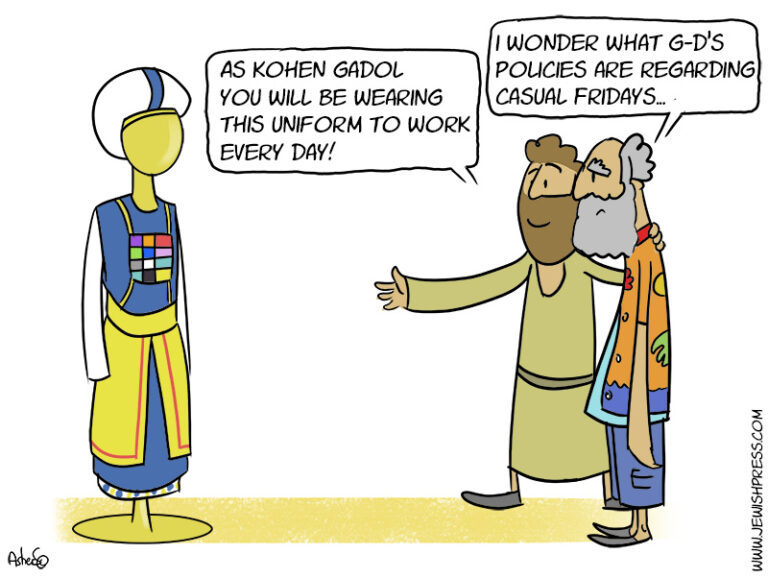The eight vestments, including golden ones, are reserved for the High Priest, as regular Kohanim wear only 4 white garments. Wearing the 8 garments is so endemic to High Priesthood, that in the absence of “Shemen Hamishcha” the Kohen Gadol is inaugurated by dressing him up in the “Bigdei Zahav”. Still, on Yom Kippur, when he enters the Holy of Holies, the Kohen Gadol wears only linen. The Gemara (RH 26) famously offers, ××× ×§××××ר × ×¢×©× ×× ××××. Gold can never be totally free of association to the root of our national din, the Golden Calf. Semblance of iniquity is antithetical to the total purity of Yom Kippur.
Yerushalmi (Yoma 7:3) gives an additional opinion, encapsulated by the Pakuk, (Mishlei 25:6) “×× ×ª×ª××ר ××¤× × ×××” “Do not exalt yourself in the King’s presence”. Hubris, or indeed any expression of individuality, of the Kohen Gadol would be inappropriate in the Kodesh Kadashim as he represents the entire Jewish nation.
The Yerushalmi then hints at a third opinion, explicated in Midrash Raba (Acharei 21:10).
“×ש××× ×¢× ×××× × ×©× ×שר×× ”
As the vestments could not be used the following Yom Kippur by another Kohen Gadol, the cost of material and manufacture of new Begadim each year would be prohibitive.
Interestingly, we recently confronted the Torah’s concern for our property when instructing us to remove vessels from the plagued house (××ת ××× ×××¢).
It’s hard to imagine that R’ Levi, who offered this explanation, felt that this was THE reason for bigdei lavan. Still the message is clear. Hashem cares about our property.
We should also heed these lessons: Strive for perfection in purity, be consistent and humble, and care for the property of others.
Shabbat Shalom


